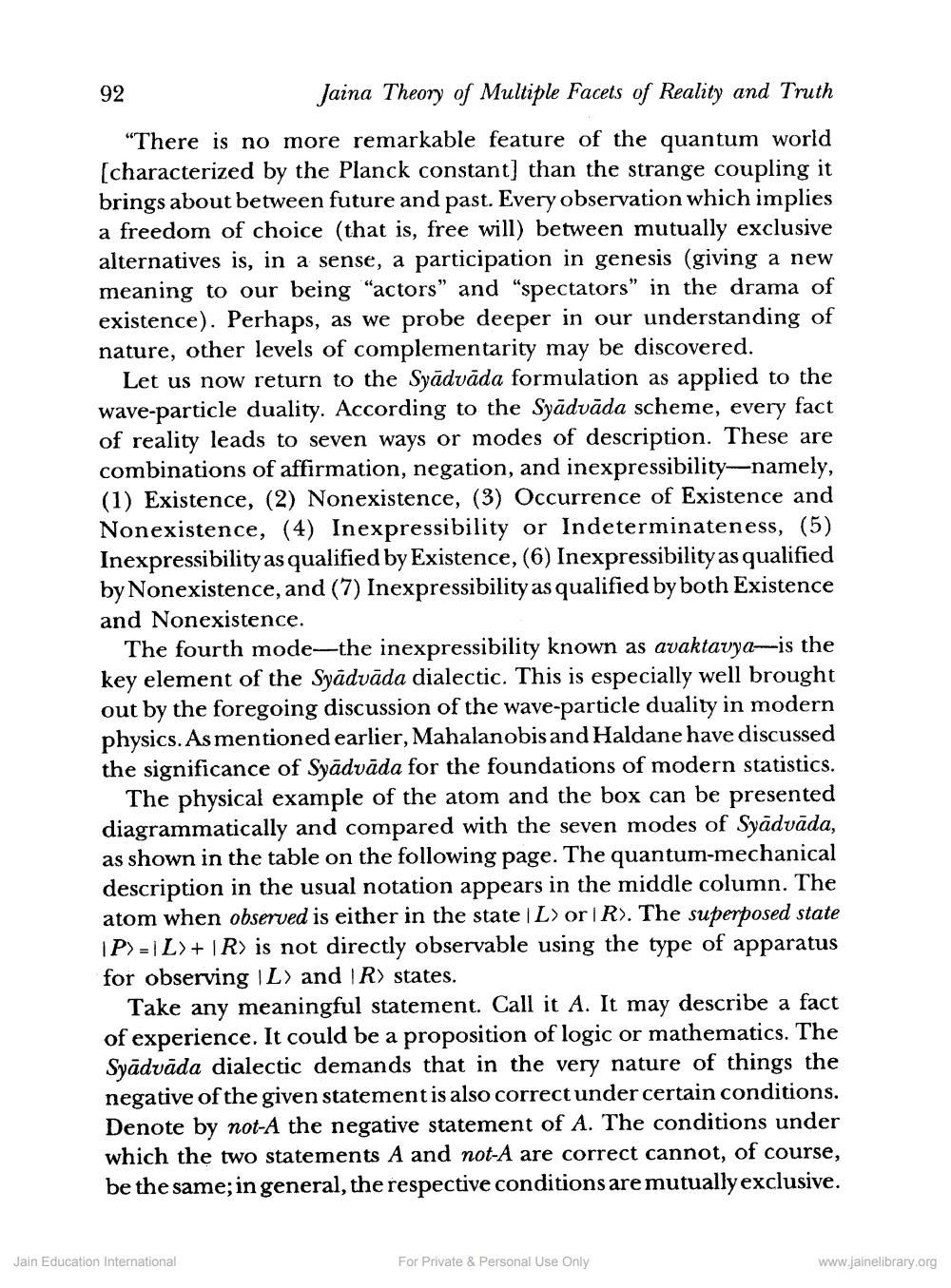________________
92
Jaina Theory of Multiple Facets of Reality and Truth "There is no more remarkable feature of the quantum world [characterized by the Planck constant) than the strange coupling it brings about between future and past. Every observation which implies a freedom of choice (that is, free will) between mutually exclusive alternatives is, in a sense, a participation in genesis (giving a new meaning to our being "actors” and “spectators" in the drama of existence). Perhaps, as we probe deeper in our understanding of nature, other levels of complementarity may be discovered.
Let us now return to the Syādvāda formulation as applied to the wave-particle duality. According to the Syādvāda scheme, every fact of reality leads to seven ways or modes of description. These are combinations of affirmation, negation, and inexpressibility-namely, (1) Existence, (2) Nonexistence, (3) Occurrence of Existence and Nonexistence, (4) Inexpressibility or Indeterminateness, (5) Inexpressibility as qualified by Existence, (6) Inexpressibility as qualified by Nonexistence, and (7) Inexpressibility as qualified by both Existence and Nonexistence.
The fourth mode—the inexpressibility known as avaktavya-is the key element of the Syādvāda dialectic. This is especially well brought out by the foregoing discussion of the wave-particle duality in modern physics. As mentioned earlier, Mahalanobis and Haldane have discussed the significance of Syādvāda for the foundations of modern statistics.
The physical example of the atom and the box can be presented diagrammatically and compared with the seven modes of Syādvāda, as shown in the table on the following page. The quantum-mechanical description in the usual notation appears in the middle column. The atom when observed is either in the state L> or iR). The superposed state 1P) =1L>+ |R> is not directly observable using the type of apparatus for observing IL) and IR> states.
Take any meaningful statement. Call it A. It may describe a fact of experience. It could be a proposition of logic or mathematics. The Syādvāda dialectic demands that in the very nature of things the negative of the given statement is also correct under certain conditions. Denote by not-A the negative statement of A. The conditions under which the two statements A and not-A are correct cannot, of course, be the same; in general, the respective conditions are mutually exclusive.
Jain Education International
For Private & Personal Use Only
www.jainelibrary.org




